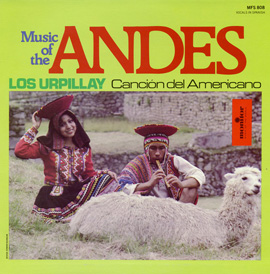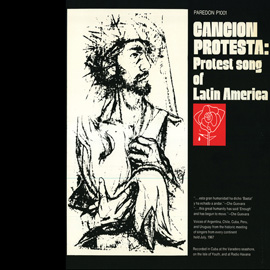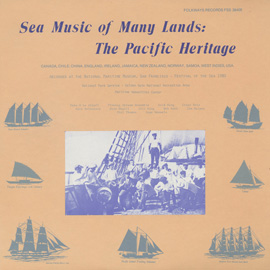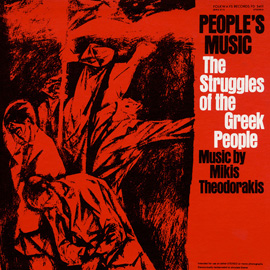Chile: The Siege of Santa Maria de Iquique: A People's Cantata of the Chilean Nitrate Miners
Quilapayún and Hector Duvachelle
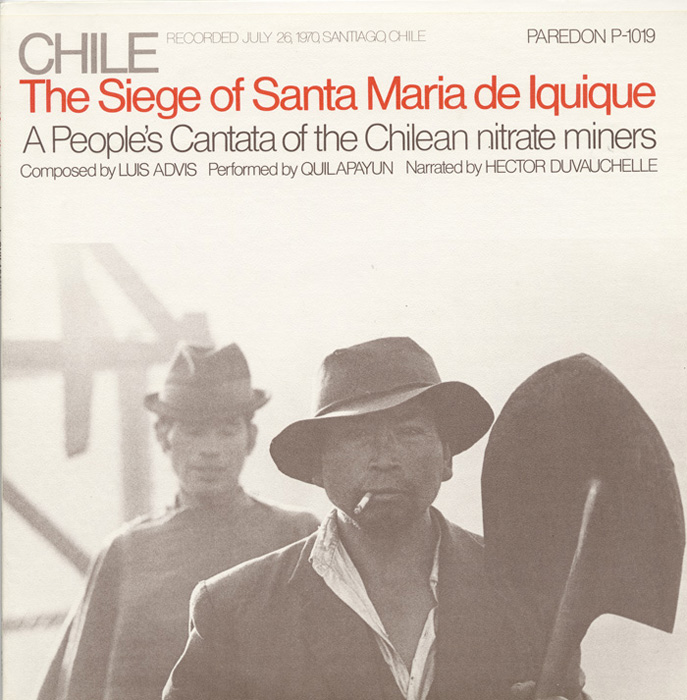
In 1907, Chilean workers in nitrate mines, owned largely by foreign companies, went on strike with demands for humane working conditions and higher wages. Eighteen thousand miners marched with their families to the port of Santa Maria de Iquique seeking support, only to be met at their encampment with a slew of bullets fired by the army, killing two thousand people. Chile: The Siege of Santa Maria de Iquique: A People's Cantata of the Chilean Nitrate Miners, composed by Luis Advis, weaves together verbal narration by Hector Duvauchelle with song and musical interludes by the folk group Quilapayún to recount the story of the 1907 massacre.
At the time of the recording, the ideologies of the left-wing Popular Unity alliance, recognized as the “Chilean road” to socialism, resonated profoundly in cultural works. Folk music became a primary cultural manifestation of the period; the popular group Quilapayún’s songs contain lyrics pertaining to worker solidarity and the foreign domination of Chile’s economy. Drawing inspiration from the culture of the Andean altiplano (highlands), they use a variety of Andean Indian musical instruments in reaction to the “cultural imperialism” of North American and European music. The connections between the historical incident narrated in this recording and the context in which it was recorded reveals the lasting legacy of Chilean workers’ struggles. As Hector Garcia, the author of the liner notes essay, reminds the reader: “History will repeat itself, each time on a higher level.”
EN ESPAÑOL
En 1907, los trabajadores chilenos de las minas de salitre, una industria que por lo tanto pertenecía de empresas extranjeras, declararon una huelga, exigiendo condiciones laborales humanas y salarios más altos. Dieciocho mil mineros marcharon con sus familias al puerto de Santa María de Iquique en busca de apoyo a su causa. Pero fueron recibidos en su campamento con una andanada de balas, disparadas por el ejército, matando a dos mil personas. Chile: The Siege of Santa Maria de Iquique: A People's Cantata of the Chilean Nitrate Miners, compuesta por Luis Advis, entrelaza la narración verbal de Héctor Duvauchelle con el canto y interludios musicales del grupo folclórico Quilapayún para recontar la historia de la masacre de 1907.
Al momento de la grabación del álbum, las ideologías de la alianza izquierdista Unidad Popular, conocidas como el “camino chileno” al socialismo, resonaron profundamente en obras culturales. La música folclórica se convirtió en una manifestación cultural primaria del período; las canciones del grupo popular Quilapayún contienen líricas sobre la solidaridad de los trabajadores y la dominación extranjera de la economía de Chile. Inspirándose en la cultura del altiplano andino, utilizan una variedad de instrumentos musicales indios andinos en reacción al "imperialismo cultural" de la música norteamericana y europea. Las conexiones entre el hecho histórico narrado en esta grabación y el contexto en el que fue grabado revelan el legado perdurable de las luchas de los trabajadores chilenos. Como Héctor García, el autor del ensayo en las notas, le recuerda al lector: “La historia se repetirá, cada vez en un nivel más alto”.
Track Listing




